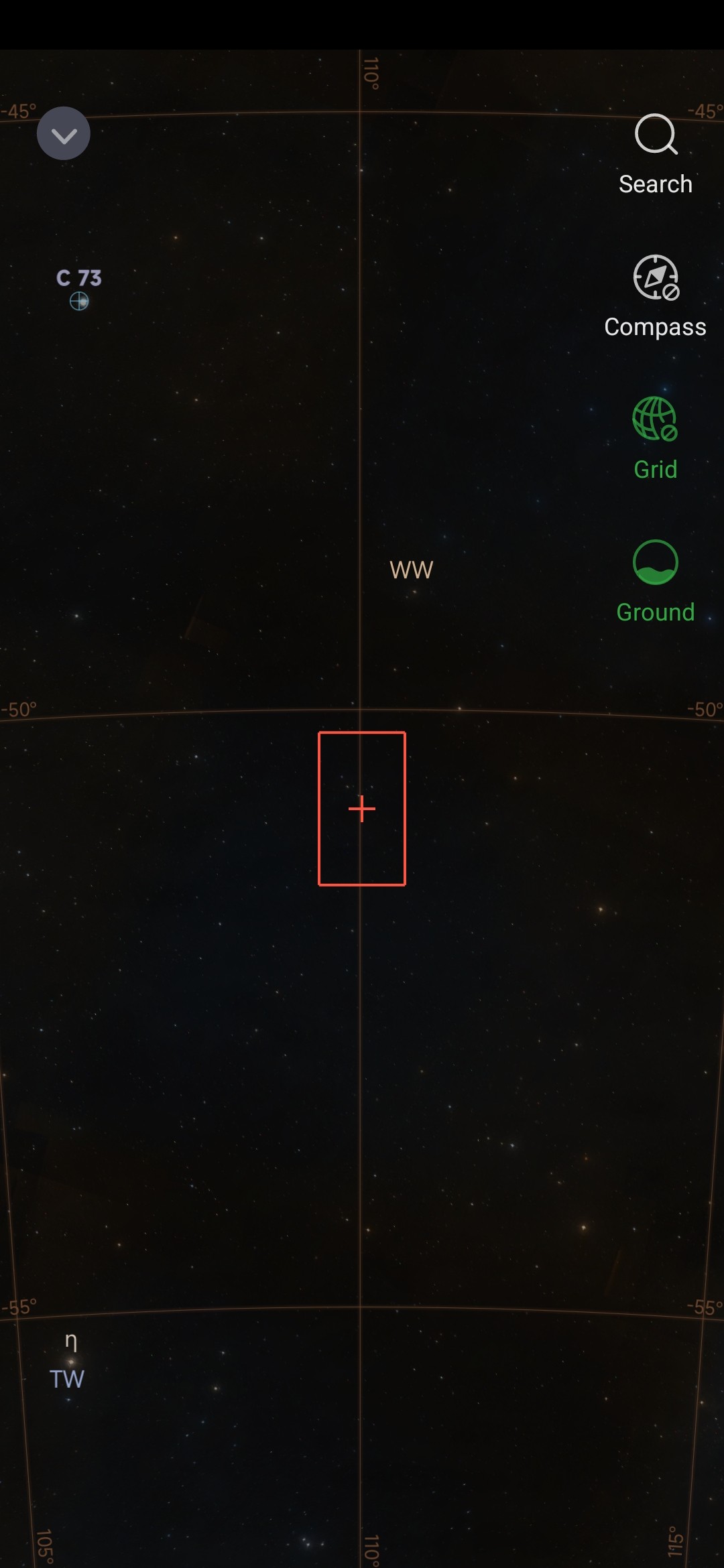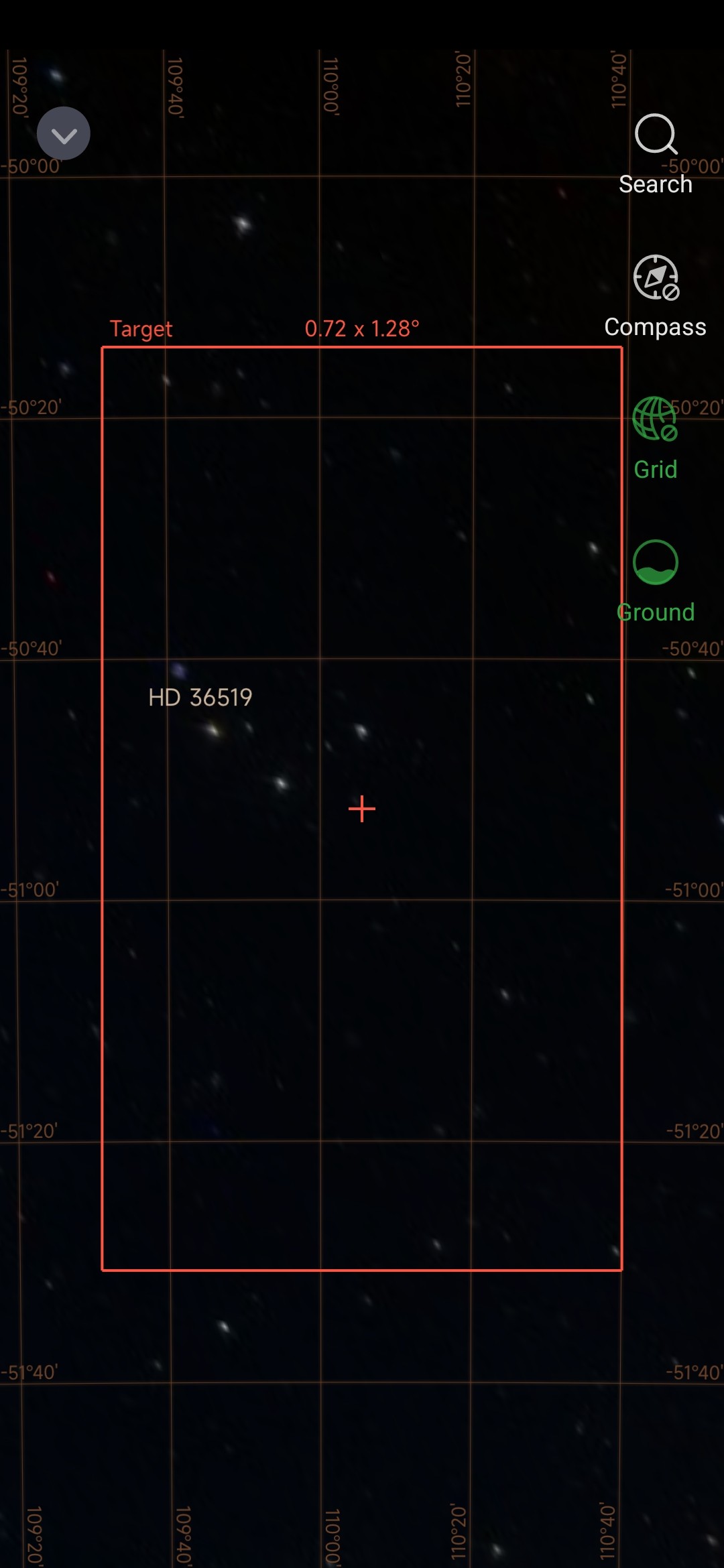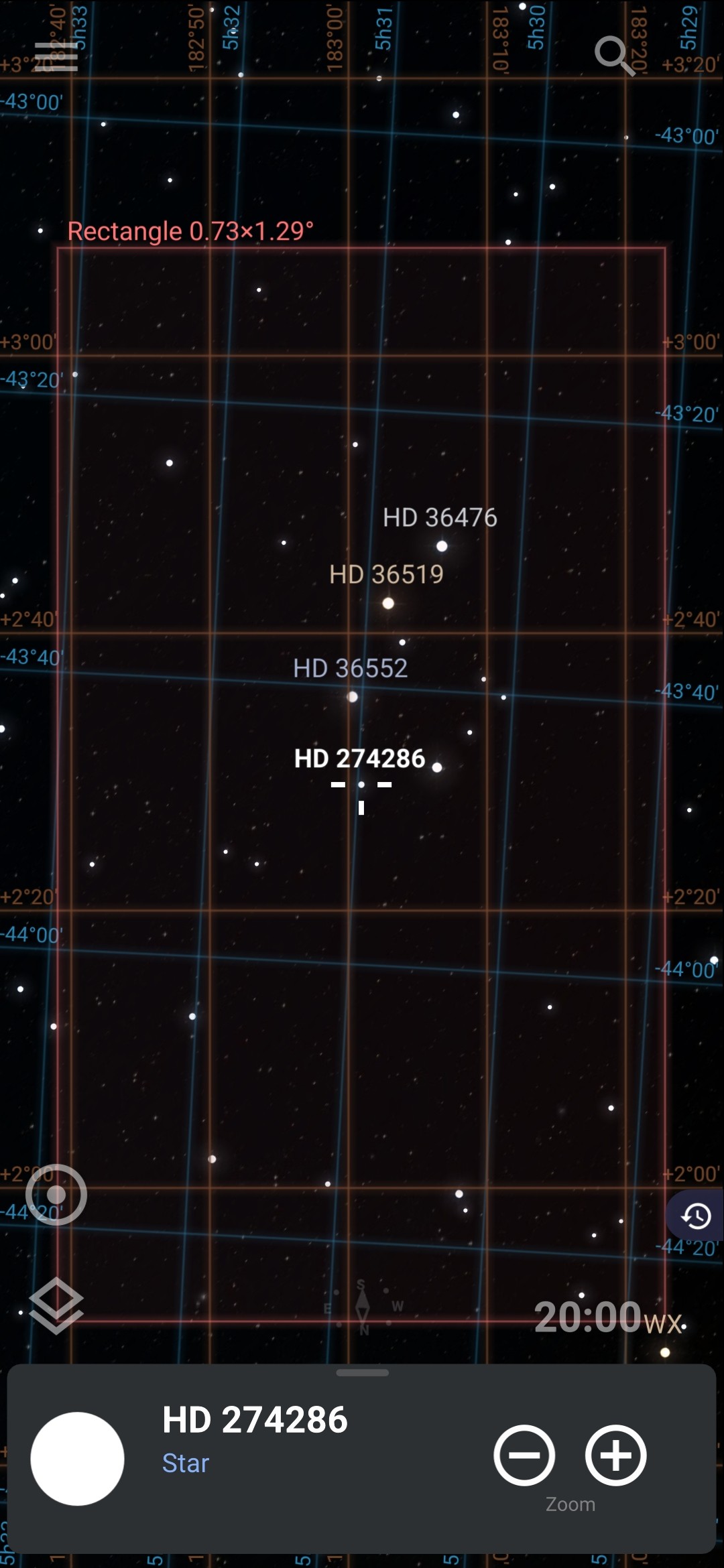Yes, we can. It is harder (because while much bigger it is much farther away), but if the reported apparent magnitude of 16 is correct, we should be able to see it with a S50. My record so far is a magnitude 16.5 star from Toronto so it is worth trying, especially with better seeing conditions than mine. But not from the northern hemisphere, maybe from India or southern Mexico and paces like that, from Toronto the highest it goes up in the sky is 2 degrees, so there is no way. But this is the right part of the year to try a capture, so if anybody with a S50 anywhere in the southern hemisphere is willing to donate one hour of their time, we northerners would be very grateful.
If you are willing to try this, here are the instructions (because you cannot just search for it in SkyAtlas by RA/Dec coordinates, that would be too easy, right ZWO?). The best time to capture the exposure is between l 20:00 and 24:00 local time, no matter where in the world you are, south of the equator, of course. The more south you are the shorter the night will be and the later you will have to do it, wait for at least one hour after sunset. A low light pollution area would be nice and no full moon will help too. You need to acquire at least an hour to see magnitude 16, so plan accordingly.
Here is how you can find the thing with the S50. The closest object in its data base that you can search for is C73, a globular cluster - while you are in the neighborhood you might as well take a quick 5-min test capture to make sure everything works as expected and not waste a whole hour of your time. Make sure you do an auto-focus before and decide if there is a need to turn on the anti-dew heater or not, depending on your local conditions. The C73 SkyAtlas search should return something like this:

Zoom out a bit until you still see C73 but also two stars labeled eta TW and WW. It is not possible to chose the time in SkyAtlas (why not ZWO?) so your image will be rotated compared with this. Do not zoom out too much because then all the labels are gone and you will be lost. The blue rectangle will still be around C73 but try to move the red one as close as possible to where the red rectangle in my screen shot is:

Then without moving away from that spot zoom in until you see something like this (again, your image will be rotated relative to mine):

There is a group of four stars, one of them is labeled HD 36519 when you zoom in fully, that's what you need to find. You need to position your red cross where mine is, there is an even dimmer star named HD 274286 under it but there is no label in SkyAtlas other than the HD 36519 one to guide you. If you managed to find that spot, start a one hour capture, with or without LP filter, depending on your local conditions. If you have time, do both. The J0529-4351 is only 5 arcmin away from where my red cross is, which is about 125 pixels, so we should be able to find it in that shot.
For reference, here is a Stellarium recreation of what you should see when you start your capture, this one is for local time 20:00 wherever you are. I am not sure but in the southern hemisphere you may see this upside down so don't get confused if that's the case. Here more stars are labeled but in SkyAtlas you will only see the HD 36519 one. The white cross on HD 274286 is where your red cross in SkyAtlas needs to be:

If anyone in the southern hemisphere is willing to exchange their FITS files of the J0529-4351 quasar with my Markarian 231 ones, which they can never see from they are, please contact me directly at "starnet at rogers dot com". But you must be located in the southern hemisphere or at least south of latitude 20 or so in the northern hemisphere to even try and be ready for a one hour capture, which will most likely take about 90 minutes. And the best time to do it is in the next couple of weeks, especially if there is no full moon.